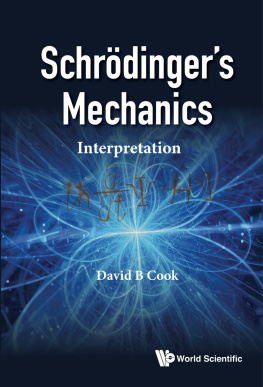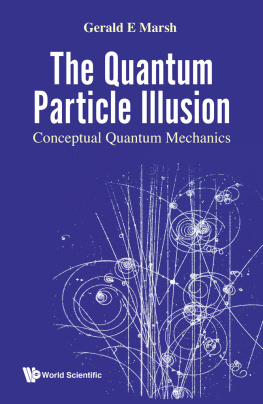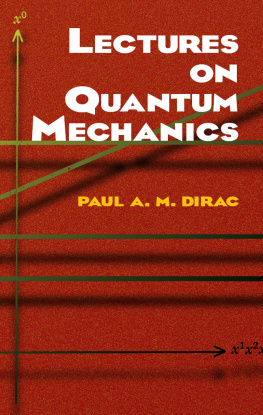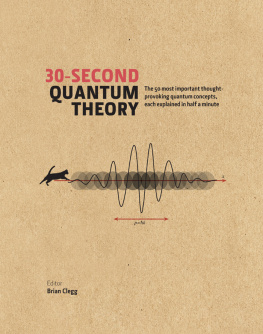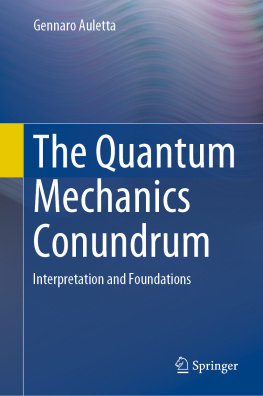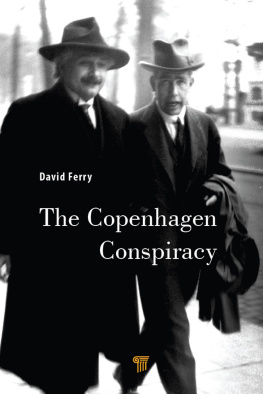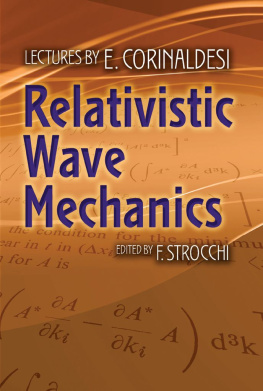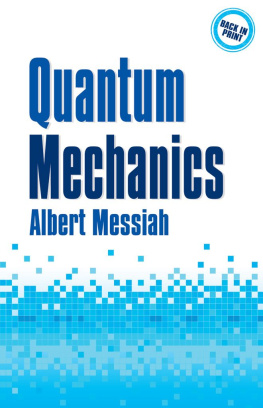About the Author
Dr. David B. Cook is an Associate of the University of Sheffield, England. He graduated from the University of Sheffield with a B.Sc. in 1962, postgraduation (PhD) in 1966, and a D.Sc. in 1989. He served as a Postdoctoral Fellow along with Prof. Roy McWeeny at Keele University, England, in the year 1966. During his tenure from 1967 to 2003 at the University of Sheffield, he has been a Lecturer, a Senior Lecturer, and a Director of Studies. His earlier published books include Ab Initio Valence Calculations in Chemistry (Butterworths, 1974), Structures and Approximations for Electrons in Molecules (Ellis Horwood, 1978), Schrdingers Mechanics (World Scientific, 1988), Handbook of Computational Quantum Chemistry (OUP, 1998), Probability and Schrdingers Mechanics (Imperial College Press, 2002), Handbook of Computational Quantum Chemistry (Revised Edition) (Dover Publications, 2005), Quantum Chemistry: A Unified Approach (Imperial College Press, 2008), and Quantum Chemistry: A Unified Approach (Revised Second Edition) (Imperial College Press, 2012). He has published over 60 scientific papers in the areas of the theory and implementation of the calculation of molecular electronic structure; in three-quarters of these, he was the sole author.
Chapter 1
Aims
) tries, in the most cogent and positive possible terms, to summarise what Schrdingers Mechanics is and its physical interpretation. The remaining chapters are a series of comments, from the point of view of SM, on other developments in quantum theory.
The overall aims of the work, in the first part are as follows:
(1)To place Schrdinger into the position of the culmination of the Great Tradition of Analytical Mechanics, that is after Newton, Lagrange, Hamilton and Jacobi. Also adding the pioneering work of Poincare and Kolmogorov to create an interpreted, paradox-free theory of the energetics and probability distributions of sub-atomic particles; forming a clear and comprehensible formulation of what I have called Schrdingers Mechanics (SM).
(2)To show that other formulations of Quantum Mechanics (QM) are either reducible to or abstracted from SM; none of them are capable of generating SM in the same sense that SM can generate them.
(3)The probability distributions in SM, and the state functions from which they are formed, are the same as all other probability distributions. They are mathematical functions of space and exist not in the real world but in our heads, on paper or in our computers. The relationship between Probability and Statistics is emphasised. Confusions between these two and the role of colloquial uses of language in discussions of probability and physics can be seen as a source of most difficulties.
When this is done all the traditional problems of the interpretation of QM simply fall away. There is no waveparticle duality; no measurement problem; no collapse of the wave function and, most disappointingly for popular science writers, no many-worlds or many-universes speculation. Heisenbergs uncertainty principle is shown to be a theorem and not a universal excuse for creating what (in a different context) Stephen Jay Gould labeled Just-So Stories: post hoc justifications of current practice.
The remaining chapters address points of wider interest:
(1)To show the interpretation of SM can be extended to include spin entirely within non-relativistic SM by substituting a Geometric Algebra representation of space for the usual symbolic vector system.
(2)To investigate some consequences of imposing the constraints of Special Relativity on the formulation of SM.
(3)To try and draw a sharp distinction between a physical theory and the mathematical technologies used in the approximation methods involved in practical applications; to distinguish interpretation of a theory from attempts to interpret the mathematical terms generated by these technologies.
(4)To distinguish between physical and mathematical fields and the consequences of this distinction for the physical interpretation of these entities. To question the conflation of fields and particles.
(5)To stress the limitations of what can be achieved by this approach. Any experimental data which can be conclusively shown to be inexplicable by the methods outlined here call for an extension of the Great Tradition beyond SM and will not be considered here. No theory is of unlimited application,consistent, interpretable and, above all, at least as successful in describing the mechanisms of the real world and generate verifiable physical results. Finally, SM has been at least as successful in interpreting and describing the sub-atomic world (electron physics and chemistry) as Classical Particle Mechanics has been on the human scale. Any acceptable theory of sub-nuclear phenomena would be required to be as successful and not yet another example of semi-empirical Ptolomaic Science.
It might be thought that the work presented here is old-fashioned and, indeed, so it is, but insofar as all the more modern interpretations of the various quantum theories are ultimately based on the interpretation of SM, they depend for their validity on this interpretation.
Throughout the work the derivations given are simply outlines of how more rigorous methods might be used.
There will never be a Theory of everything.
Chapter 2
Basics: The Schrdinger Condition
Did all of those old guys swing like that?
2.1 Method
Much of 20th century theoretical physics can be characterised by,
Schrdinger (Maxwell, Dirac) Equation, how many ways can I write thee? Let me count the ways.
Mathematicians are notorious for ignoring the physical interpretation of their excursions into theoretical physics sometimes brazenly so and tend, like the Red Queen, to be capable of believing six impossible things before breakfast.
In this essay, I take the opposing view: that the physical interpretation of mathematics must be given greater importance than its structure, generality or even elegance (Boltzmann is reported to
There are several clear descriptions of the necessary conditions for a (physical) theory to be considered scientific; below is an extract from Lucio Russos superbly written book:
(1)Their statements are not about concrete objects, but about specific theoretical entities. For example, Euclidean geometry makes statements about angles or segments, and thermodynamics about the temperature or entropy of a system, but in nature there is no angle, segment, temperature or entropy.
(2)The theory has a rigorously deductive structure. It consists of a few fundamental statements (called axioms, postulates, or principles) about its own theoretical entities, and it gives a unified and universally accepted means for deducing from them an infinite number of consequences. In other words, the theory provides general methods for solving an unlimited number of problems. Such problems, posable within the scope of the theory, are in reality exercises, in the sense that there is general agreement among specialists on the methods of solving them and of checking the correctness of the solutions. The fundamental methods are proofs and calculation. The truth of scientific statements is therefore guaranteed in this sense.
(3)Applications to the real world are based on correspondence rules between the entities of the theory and concrete objects. Unlike the internal assertions of the theory, the correspondence rules carry no absolute guarantee. The fundamental method for checking their validity, which is to say the applicability of the theory, is the experimental method. In any case, the range of validity of the correspondence rules is always limited.

